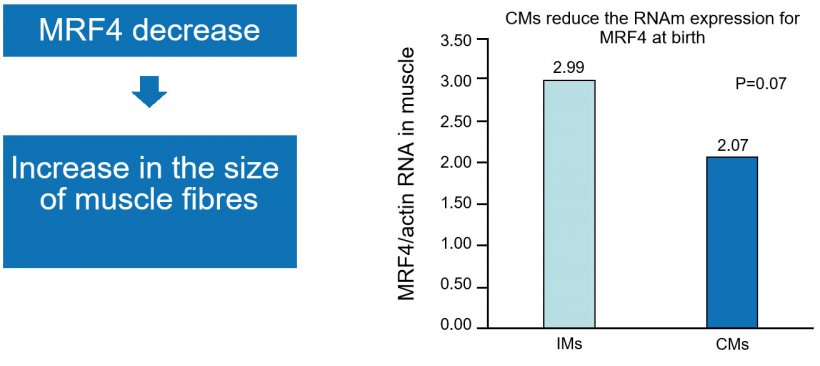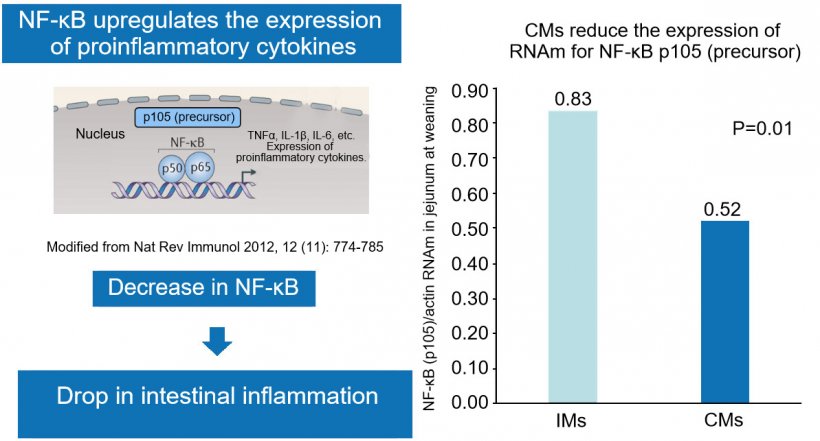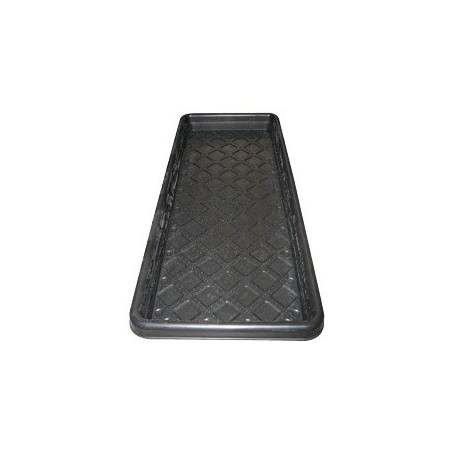In the current pig sector, the productivity of sows of genetic lines with a high prolificacy and increasing litter sizes, one of the main challenges is to keep the piglets alive. It is well known that some factors such as inheritance, the environment, the dam's nutrition and other factors can have an influence on the development of the foetus' organs and tissues. In the case of mammals, if the foetus cannot obtain the nutrients needed for its development, the foetal growth and the offspring's performance could become compromised. Therefore, the dam's nutrition is important for the foetal growth and the development of the offspring.
Some trace elements, such as zinc, copper and manganese play a essential role in the foetal and postnatal development, because they are necessary for the correct development of the immune system and muscle growth. Recent research has shown that supplementation with trace elements beyond the nutritional requirements can increase muscle growth and immunity in other species (Fry et al., 2012; Gao et al., 2014). Nevertheless, the effects of the dam's nutrition in terms of zinc, copper and manganese on the development of the skeletal muscle and the immune system of the offspring is not yet known in depth in the case of swine.

The task of epigenetics is the study of hereditary changes in the gene expression that do not imply alterations in the underlying DNA sequence. In conclusion, it has to do with changes in the animal's phenotype, but not in its genotype, and only in the way in which the cells read the genes. It is currently deemed that there are at least three processes that allow the epigenetic change: 1) DNA methylation; 2) histones modification; and 3) the silencing of the non-RNA-codifying genes. Epigenetic changes are usual and natural, and they can be influenced by several factors, including age, the environment, nutrition and several diseases. Although we know that the amount and the quality of the nutrients induce direct effects on health, the interaction of nutrition with epigenetic modifications is normally overlooked, although it has been proven that it can have an influence on the biologic variation in mammals and fowl.
A recent study carried out in collaboration with North Carolina Sate University (USA) established the effects of the supplementation of sows' diets with hydroxy-analogue methionine-chelated trace elements on the epigenetic change in the offspring's muscle and gut tissue. On day 35 of gestation, 60 sows were assigned one of two diet treatments that only differed with respect to the source of minerals in the diet. The design was as random complete blocks using the parity as a block: 1) inorganic minerals (IMs): CuSO4, MnO, and ZnSO4; and 2) chelated minerals (CMs): Cu, Mn, and Zn chelated with hydroxy-analogue methionine. The gestation and lactation diets were formulated to satisfy or exceed the nutrient requirements suggested by the NRC (2012). On days 1 and 18 of lactation, two piglets per litter were slaughtered to take longissimus dorsi muscle and jejunum samples and to measure the global DNA methylation, the histone acetylation and the gene expression. The sows fed with CMs tended to suffer a lower bodyweight loss during lactation (P = 0.05) and tended to produce piglets with a greater bodyweight at 18 days of age (P = 0.09). The supplementation with CMs in sows significantly increased the global histone acetylation (P < 0.05) and tended to reduce (P = 0.07) the myogenic transcription factor 4 RNAm in the muscle, a factor negatively involved with muscle development (Figure 1) of piglets at birth. In turn, CMs significantly decreased (P < 0.05) the RNAm of the nuclear factor NF-kB (protein complex that controls the production of cytokines and the regulation of the immune response against infections (Figure 2).

Figure 1. The drop in nuclear factor MRF4 increases muscle growth (hypertrophy).

Figure 2. The drop in nuclear factor NF-κB reduces gut inflammation.
In conclusion, feeding sows with hydroxy-analogue methionine-chelated trace elements has a positive effect on the offspring through the modulation of the embryonic expression of genes involved in the muscle development and the gut immunity, and this helps the piglet reach its weaning under better conditions. Equally, the supplementation with these chelated trace elements improves, potentially, the sow's body condition during lactation, this leading to a better performance in the following cycle.





